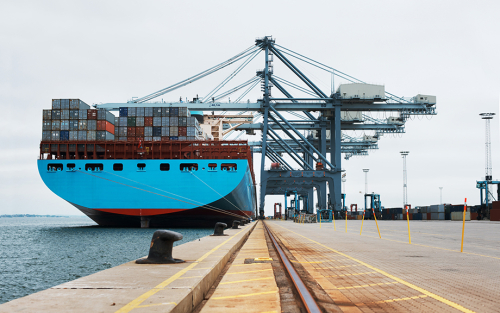An Update on the U.S.–China Phase One Trade Deal

A Liberty Street Economics post from last summer by Matthew Higgins and Thomas Klitgaard contained an assessment of the Phase One trade agreement between the United States and China. The authors of that note found that, depending on how successfully the deal was implemented, the impact on U.S. economic growth could have been substantially larger than originally foreseen by many of its critics, as a result of the fact that the pandemic had depressed the U.S. economy far below its potential growth path. Here we take another look at these considerations with the benefit of an additional year’s worth of trade data and a much different economic environment in the United States.
Reconsidering the Phase One Trade Deal with China in the Midst of the Pandemic

It may be hard to remember given the pandemic, but trade tensions between the United States and China eased in January 2020 with the inking of the Phase One agreement. Under the deal, China committed to a massive increase in its purchases of U.S. goods and services, with targets set for various types of products. At the time of the pact, the U.S. economy was operating near full capacity, and any increase in U.S. exports stemming from the pact would likely have resulted in only a small boost to growth. The environment is now starkly different, with the U.S. economy operating far below potential. While the promised increase in Chinese purchases seems unlikely to be achieved, any appreciable increase in exports from the agreement could deliver a meaningful boost to the economy.
How Did China’s COVID‑19 Shutdown Affect U.S. Supply Chains?

The COVID-19 pandemic has had a significant impact on trade between the United States and China so far. As workers became sick or were quarantined, factories temporarily closed, disrupting international supply chains. At the same time, the trade relationship between the United States and China has been characterized by rising protectionism and heightened trade policy uncertainty over the last few years. Against this background, this post examines how the recent period of economic disruptions in China has affected U.S. imports and discusses how this episode might impact firms’ supply chains going forward.
Are U.S. Tariffs Turning Vietnam into an Export Powerhouse?

The imposition of Section 301 tariffs on about half of China’s exports to the United States has coincided with a fall in imports from China and gains for other countries. The U.S.-China trade conflict also appears to be accelerating an ongoing shift in foreign direct investment (FDI) from China to other emerging markets, particularly in Asia. Within the region, Vietnam is often cited as a clear beneficiary of these trends, a rising economy that could displace China, to some extent, in global supply chains. In this note, we examine the data and conclude that Vietnam is indeed gaining market share, but is too small to replace China anytime soon.
Just Released: August Regional Survey—Businesses See Tariffs Raising Prices
This week, we released our August surveys of manufacturers and service firms. Our Supplemental Survey Report, released this morning, reveals how businesses view the effects of recent trade policy on their costs, prices, sales, and profits. The results suggest that recent tariffs are raising both input costs and selling prices for local businesses, and these effects appear to be more widespread for manufacturers than for service firms.
Did Import Competition Boost Household Debt Demand?

In the years preceding the Great Recession, the United States experienced a dramatic rise in household debt and an unprecedented increase in import competition. In a recent staff report, we outline a link between these two seemingly unrelated phenomena. We argue that the displacement of workers exposed to import competition fueled their demand for mortgage credit, which left many households more vulnerable to the eventual downturn in the housing market.
Would a Stronger Renminbi Narrow the U.S.‑China Trade Imbalance?
The United States buys much more from China than it sells to China—an imbalance that accounts for almost half of our overall merchandise trade deficit. China’s policy of keeping its exchange rate low is often cited as a key driver of that country’s large overall trade surplus and of its bilateral surplus with the United States. The argument is that a stronger renminbi (the official currency of China) would help reduce that country’s trade imbalance with the United States by lowering the prices of U.S. goods relative to those made in China. In this post, we examine the thinking behind this view. We find that a stronger renminbi would have a relatively small near-term impact on the U.S. bilateral trade deficit with China and an even more modest impact on the overall U.S. deficit.
Did Trade Finance Contribute to the Global Trade Collapse?
The financial crisis of 2008-09 brought about one of the largest collapses in world trade since the end of World War II. Between the first quarter of 2008 and the first quarter of 2009, the value of real global GDP fell 4.6 percent while exports plummeted 17 percent, as can be seen in the chart below. The dramatic decline in world trade—a loss of $761 billion in nominal exports—came through two channels: decreased demand for imports and supply effects, most likely arising from financial constraints. In this post, we look at evidence that supply effects, including curtailed funding for export-related activities, played a key role in the trade collapse—and thus in the transmission of the financial crisis from Wall Street to “Main Street,” here and abroad.










 RSS Feed
RSS Feed Follow Liberty Street Economics
Follow Liberty Street Economics